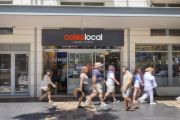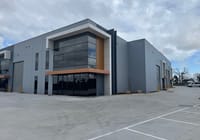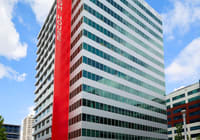
How are interest rates impacting office leasing and investment markets?
The Reserve Bank of Australia’s April announcement of an interest rate pause after 10 consecutive increases has delivered confidence to stakeholders across the economy. But what does this break in the rate-rise cycle mean for office leasing and investment markets? We ask three prominent experts for their opinions.
Sameer Chopra
Head of research, Pacific and ESG, Asia Pacific CBRE
“The office market was relatively resilient to interest rate hikes in 2022. This is because it was positively exposed to the growth in professional-services tenants such as accounting, consulting and legal, which continued to hire during 2022 and early 2023.
“At this stage, we have not seen any slack in floor space demand from these sectors.
“While interest rate increases did cool real estate values, the impact on occupiers has been more muted.
“In fact, occupiers and tenants have continued to trade up their office real estate. Our analysis shows that 66 per cent of office tenants have migrated to higher-rent buildings. Those buildings with the top quartile of rents have the lowest vacancy in Australia, at 5.5 per cent.
“In my view, the actual level of interest rate is less important than the volatility (or change) in interest rates. As interest rates stabilise, we expect more market activity. Interest rates are near peak level, and this should help to spur more activity.
“The bigger theme in leasing activity is a drive by migration. As more white-collar workers arrive in Australia – which CBRE estimates at 90,000 over 2022 to 2024 – there’s likely to be higher take-up of office space.
“In addition, if interest rates remain elevated and credit availability is challenging, we expect a few large office projects to be deferred or cancelled.
“We have already trimmed the future growth rate in office stock from 1.6 per cent to 1.1 per cent per year.”
Ronak Bhimjiani
Director & real estate economist, Australia JLL
“The steep increase in the official cash rate through 2022 was initially projected to create larger than actually observed headwinds for office markets across Australia, both in the form of yield softening – or reduction in asset values – and lower base demand for office space from tenants.
“Annual net absorption totalled 95,000 square metres in 2022, which was well above the 10-year average of 59,400 square metres.
“New office demand was particularly skewed towards quality prime-grade accommodation. Large organisations are prioritising assets with stronger health, wellness and environmental attributes to align office space to ESG goals.
“It is too early to see the impact of mildly slowing inflation and paused rate rises on office market investment. Theoretically, slowing inflation would lead to stabilising interest rates, and lead to greater clarity – and confidence – among commercial investors and tenants.
“While we have scaled demand outlook in the short-term considering weaker global economic growth, we are still projecting positive net demand for office space in 2023, which could lead to rent increases and/or tighter vacancy rates.”
Joanne Henderson
National director of research, Colliers
“Inflationary pressures driving an upward interest rate cycle led to a softening of office yields over Q4 2022 as transactions provided early signs of a pricing reset.
“As investors predominantly emphasise new buildings with wellness, experience and ESG features, capital values for premium assets only dropped by 1.7 per cent over Q1 2023, compared to values for A and B-grade assets, which dropped by 3.6 per cent and 2.7 per cent, respectively.
“As higher-quality office assets redefine the investment landscape, they are also the number one target for occupiers. More than 60 per cent of leasing deals in 2022 were for tenants committing to prime-grade office spaces, driving average national face rental growth of 5.3 per cent across all grades.
“The softer market conditions have yet to impact the leasing market this year, with Colliers reporting more than 57,000 square metres of office space leased across 111 deals in CBD markets – almost three times the area leased compared to Q1 2022, and a 60 per cent increase on the number of deals.
“Although leasing activity has been strong this year, if interest rates continue to rise we may see occupiers start to adopt a cautious approach.”










